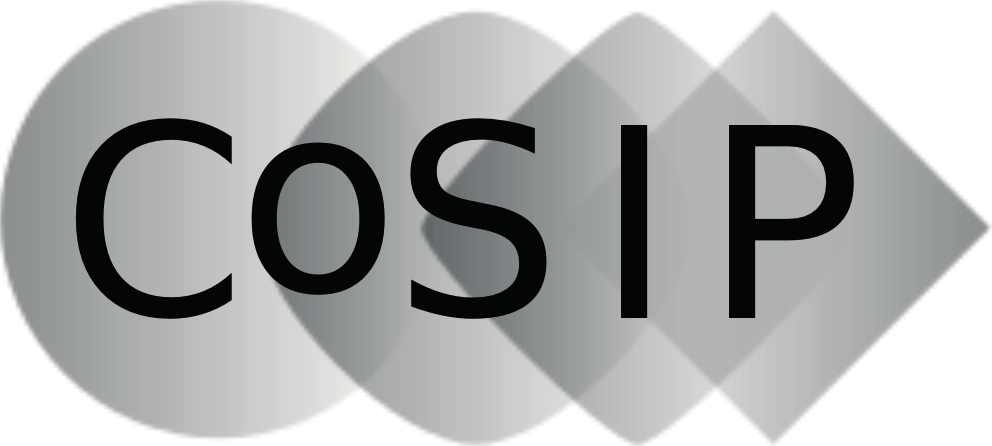Compressive 2D/3D SAR (ComSAR)
Compressive 2D/3D SAR (ComSAR)
- Professor Dr.-Ing. Joachim Ender
Fraunhofer-Institut für Hochfrequenzphysik und Radartechnik FHR
- Professor Dr.-Ing. Otmar Loffeld
Universität Siegen
Zentrum für Sensorsysteme
Zusammenfassung
Die Anwendung von Methoden des Compressive Sensing (CS) auf Verfahren des Synthetic Aperture Radar (SAR) verspricht auf der einen Seite die Reduktion von Rohdatenraten und Rohdatenmengen bei vergleichbarem Endergebnis (der ursprüngliche Ansatz von CS) , auf der anderen Seite neuartige Möglichkeiten der Gewinnung von Information. Vor allem das letztere Ziel soll in dem beantragten Projekt verfolgt werden. State-of-the-art sind erste veröffentlichte Ansätze von CS-Anwendungen für Radarbildgebung, vor allem für die Abbildung kleiner Objekte (ISAR, Spotlight), aber auch für den Spezialfall der SAR-Tomographie. Von einer der operationellen Prozessierung mit bewährten klassischen Algorithmen vergleichbaren Technik ist CS-SAR noch weit entfernt. Das Projekt soll einen Beitrag zur Schließung dieser Lücke liefern. Die Antragsteller, beide ausgewiesen in bildgebenden Radarverfahren und CS-Anwendungen, verfolgen das Ziel, die Sparsity von SAR-Daten systematisch zu untersuchen und diese mit modellbasierten Methoden zur Erzeugung von SAR-Bildergebnissen höherer Qualität zu nutzen. Insbesondere sollen die vorhandenen CS-Ansätze zur Super-Auflösung für nicht-reduzierte Daten vertieft werden. Ein weiteres Hauptanliegen ist die Nutzung sich ergänzender overcomplete dictionaries zur Identifikation unterschiedlicher Streu-Mechanismen und unterschiedlicher Szeneneigenschaften als Ausgangspunkt für eine neuartige Form der Klassifizierung und Informationsgewinnung. Das dritte Forschungsziel beinhaltet die Entwicklung von CS-Techniken für 3D-Bildgebung mit planaren realen und/oder synthetischen Aperturen, auch für Material-durchdringendes Radar, mit Anwendungen für ground penetrating radar (GPR), Qualitätskontrolle bis hin zur medizinischen Diagnostik.
Summary
Compressive Sensing (CS) methods applied to Synthetic Aperture Radar (SAR) one the one hand promise the reduction of raw data rates and quantity without losing any information concerning the final result (this was the principal paradigm and main direction of CS in the beginning), but more importantly, and this is the driver and motivation of this research proposal, it enables the development of new methods of information retrieval. State-of- the-art are first published CS approaches to radar imaging, particularly for the imaging of small objects (ISAR, Spotlight), but as well for the special case of SAR-tomography. However, CS-SAR is far from being generally understood concerning its possibilities and even farther away from being an operational or mature processing approach in comparison with classical algorithms. The works of this proposal aim at filling this apparent gap. The goal of the applicants, both well known experts in radar imaging and CS applications, is to systematically research sparsity issues in SAR-data and to exploit sparse models or combinationation of sparse models to generate SAR images of superior quality. Rather than using CS for reducing the number of measurements, they intend use the non reduced data set to increase the resolution, giving rise to super resolution. A further main aspect is the utilization of complementary overcomplete dictionaries for the identification of different scattering mechanisms and different scene characteristics as initial point for a novel form of content classification and information retrieval. The third research goal aims at the development of CS techniques for 3D-imaging with planar real and/or synthetic apertures, especially with respect to material penetrating radar, with applications for ground penetrating radar (GPR) and subsurface imaging, with impacts on quality control up to clinical diagnostics.
Preprints
- A. Seel, A. Davtyan, U. Pietsch, O. Loffeld, Norm minimized Scattering Data from Intensity Spectra, July 2016
Publications
A. Seel, A. Davtyan, U. Pietsch, O. Loffeld, Norm minimized Scattering Data from Intensity Spectra, Mathematical Problems in Engineering, Volume 2016 (2016), April 2016
Otmar Loffeld, Alexander Seel, Miguel Heredia Conde, Ling Wang, A Nullspace Based L 1 Minimizing Kalman Filter Approach to Sparse CS Reconstruction, 11th European Conference on Synthetic Aperture Radar (EUASR 2016), June 6-9 2016
Ling Wang, Otmar Loffeld, Kaili Ma, Yulei Qian, Sparse ISAR Imaging Using Greedy Kalman Filtering, 11th European Conference on Synthetic Aperture Radar (EUASR 2016), June 6-9 2016
Otmar Loffeld, Alexander Seel, Miguel Heredia Conde, Ling Wang, Sparse CS Reconstruction by Nullspace Based L1 Minimizing Kalman Filtering, International Conference on Communication (COMM), 9-10 June 2016
A. Seel, A. Davtyan, U. Pietsch, O. Loffeld, Norm minimized Scattering Data from Intensities, International Conference on Communication (COMM), 9-10 June 2016
Vinh Nguyen Xuan, Klaus Hartmann, Wolfgang Weihs and Otmar Loffeld, Combined Based on Minimum Distance Orthogonal Matching Pursuit Method for Support Recovery Improvement in Super-Resolution Compressed Sensing, 4th International Workshop on Compressed Sensing Theory and Ist Applications to Radar, Sonar and Remote Sensing, 19-22 September 2016
Miguel Heredia Conde, Klaus Hartmann, Otmar Loffeld, Simple Adaptive Progressive Edge-Growth Construction of LDPC Codes for Close(r)-to-Optimal Sensing in Pulsed ToF, 4th International Workshop on Compressed Sensing Theory and Ist Applications to Radar, Sonar and Remote Sensing, 19-22 September 2016
Ling Wang and Otmar Loffeld, ISAR Imaging Using a Null Space l1 Minimizing Kalman Filter Approach, 4th International Workshop on Compressed Sensing Theory and Ist Applications to Radar, Sonar and Remote Sensing, 19-22 September 2016

